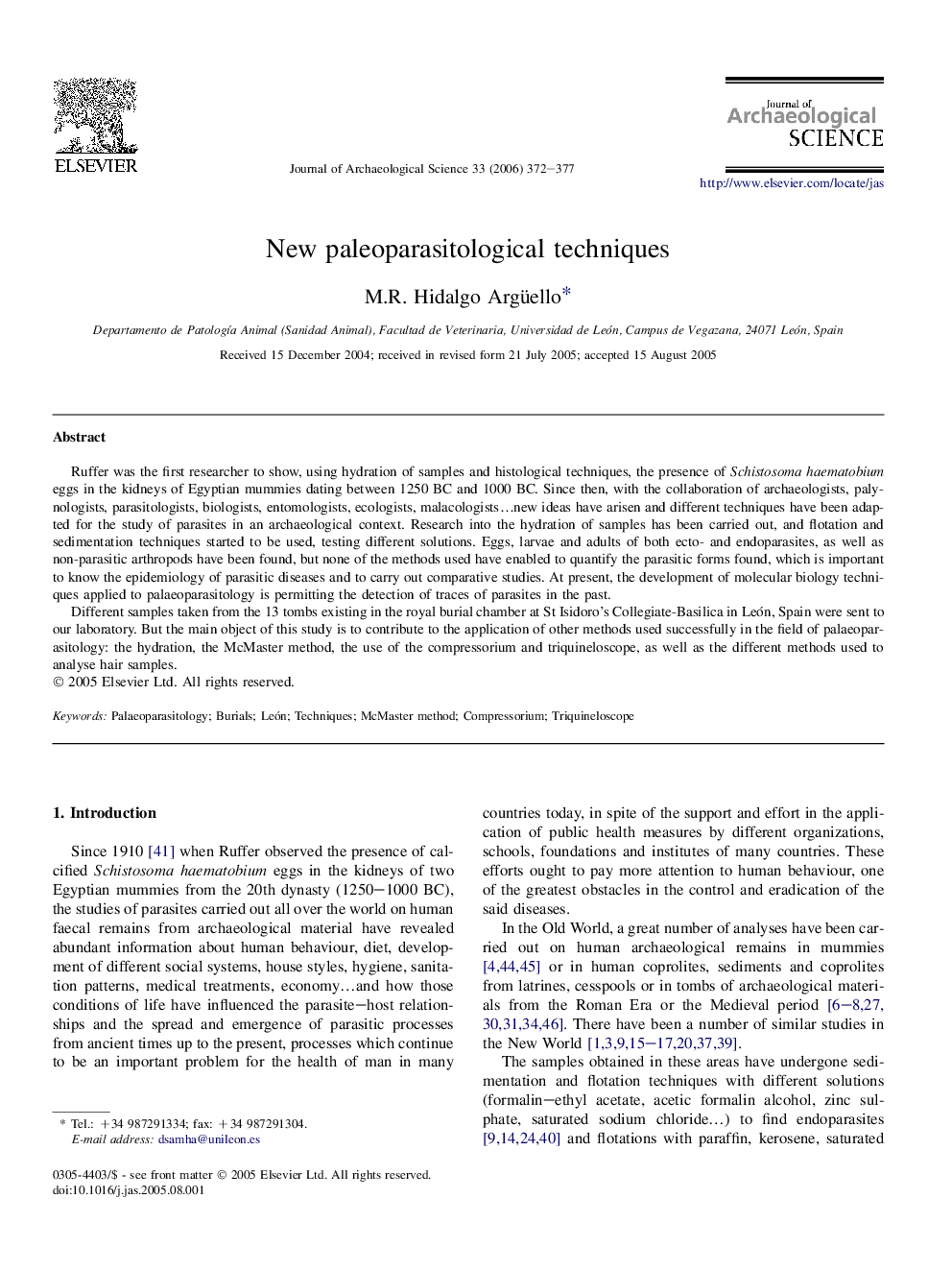| Article ID | Journal | Published Year | Pages | File Type |
|---|---|---|---|---|
| 1037708 | Journal of Archaeological Science | 2006 | 6 Pages |
Ruffer was the first researcher to show, using hydration of samples and histological techniques, the presence of Schistosoma haematobium eggs in the kidneys of Egyptian mummies dating between 1250 BC and 1000 BC. Since then, with the collaboration of archaeologists, palynologists, parasitologists, biologists, entomologists, ecologists, malacologists…new ideas have arisen and different techniques have been adapted for the study of parasites in an archaeological context. Research into the hydration of samples has been carried out, and flotation and sedimentation techniques started to be used, testing different solutions. Eggs, larvae and adults of both ecto- and endoparasites, as well as non-parasitic arthropods have been found, but none of the methods used have enabled to quantify the parasitic forms found, which is important to know the epidemiology of parasitic diseases and to carry out comparative studies. At present, the development of molecular biology techniques applied to palaeoparasitology is permitting the detection of traces of parasites in the past.Different samples taken from the 13 tombs existing in the royal burial chamber at St Isidoro's Collegiate-Basilica in León, Spain were sent to our laboratory. But the main object of this study is to contribute to the application of other methods used successfully in the field of palaeoparasitology: the hydration, the McMaster method, the use of the compressorium and triquineloscope, as well as the different methods used to analyse hair samples.
